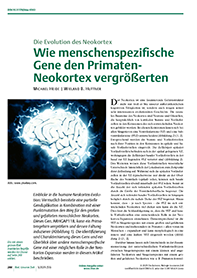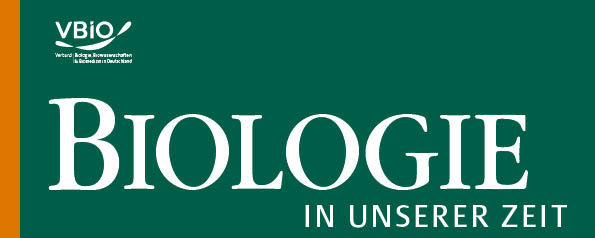How human-specific genes have expanded the primate neocortex
DOI:
https://doi.org/10.11576/biuz-6543Keywords:
Neokortex-Entwicklung, Neokortex-Evolution, menschenspezifische Gene, ARHGAP11BAbstract
In recent years, human-specific genes have been shown to be key contributors to the expansion of the human neocortex in the course of evolution. One of these genes is ARHGAP11B. ARHGAP11B is specifically expressed in progenitor cells of the neocortex. By using different model organisms, it has been possible to show that the product of this gene can increase not only the number of the relevant progenitor cells but also the number of upper-layer neurons. ARHGAP11B achieves this by acting within mitochondria and enhancing glutaminolysis, similar to what happens in cancer cells. In the end, it has been possible to show that these effects of ARHGAP11B can enlarge the primate brain and induce its folding. Furthermore, it could be demonstrated on a mouse model that this enlargement leads to improved cognitive performance. Thus, ARHGAP11B is most likely an essential factor for the evolutionary expansion of the human neocortex. Consistent with this is the finding in human brain organoids that ARHGAP11B is essential for the high number of basal progenitors which is characteristic of the developing human neocortex. Accordingly, the analysis of additional human-specific genes probably further improves our understanding of human neocortex evolution.

Downloads
Published
How to Cite
Issue
Section
License
Copyright (c) 2023 Michael Heide, Wieland B. Huttner

This work is licensed under a Creative Commons Attribution-ShareAlike 4.0 International License.

